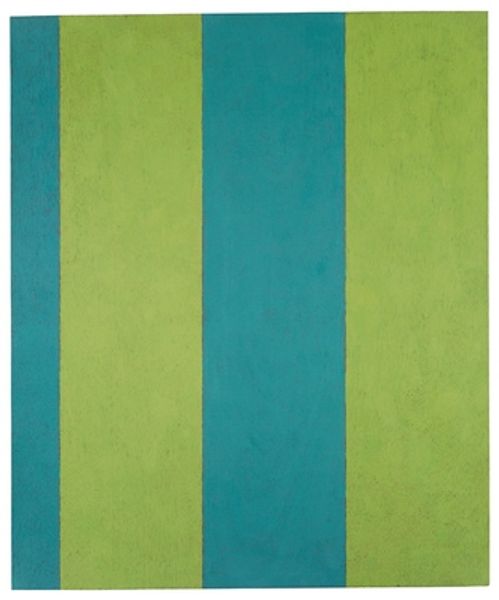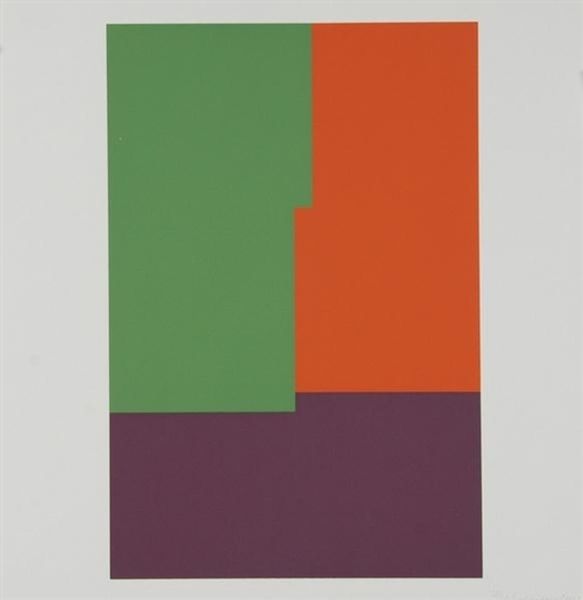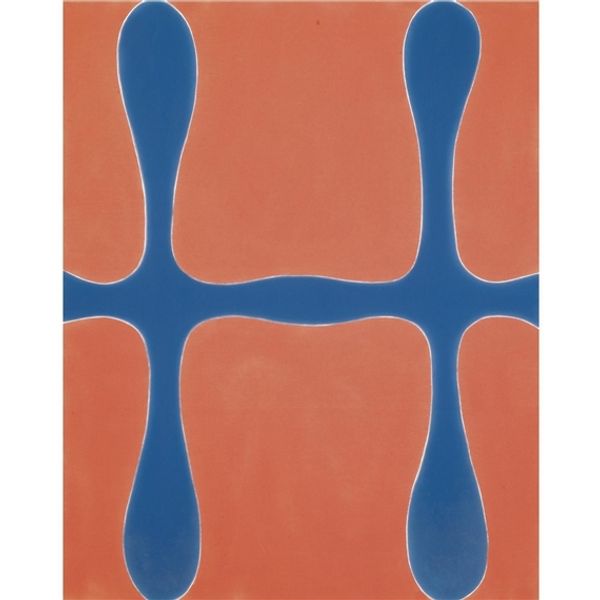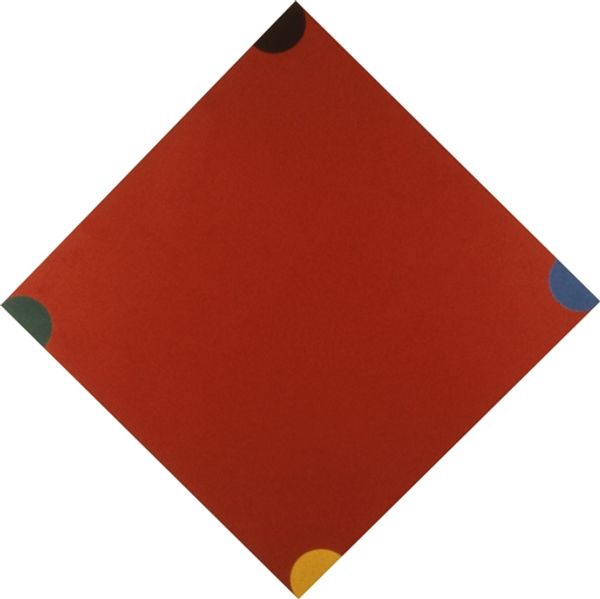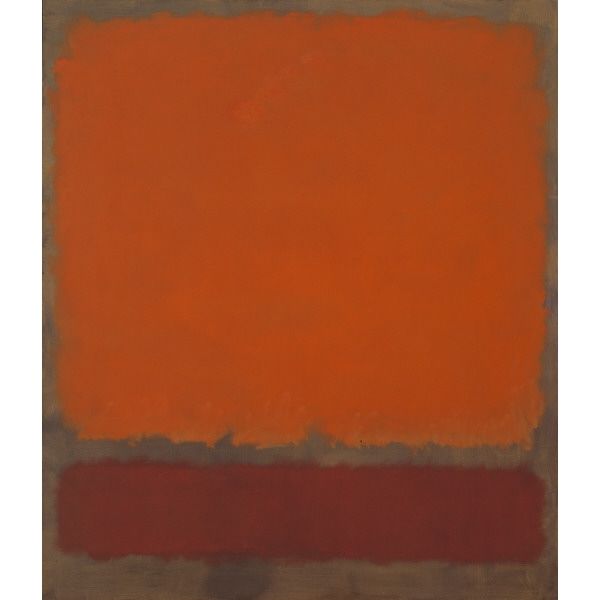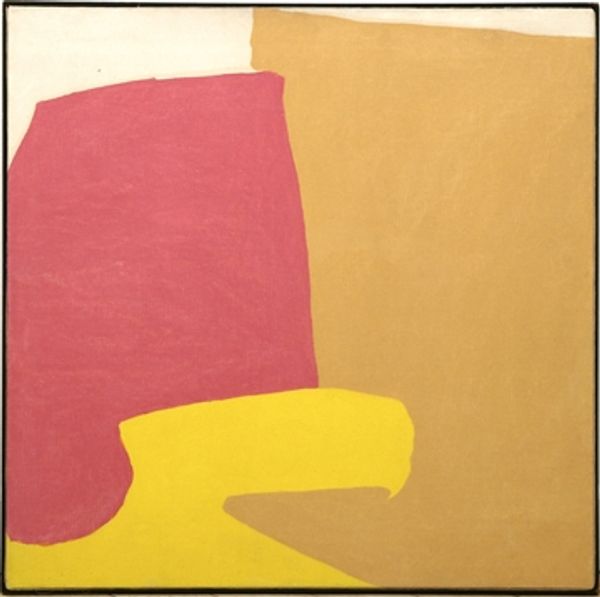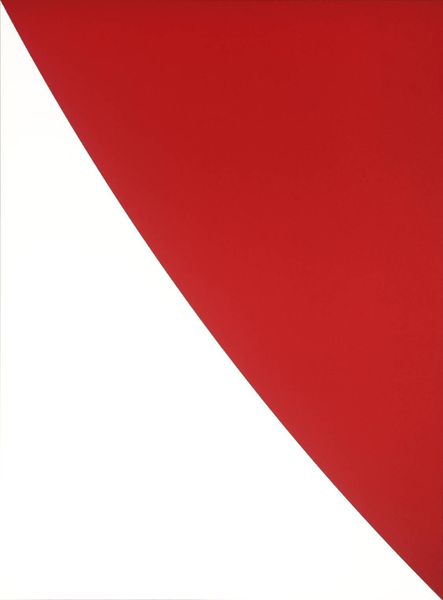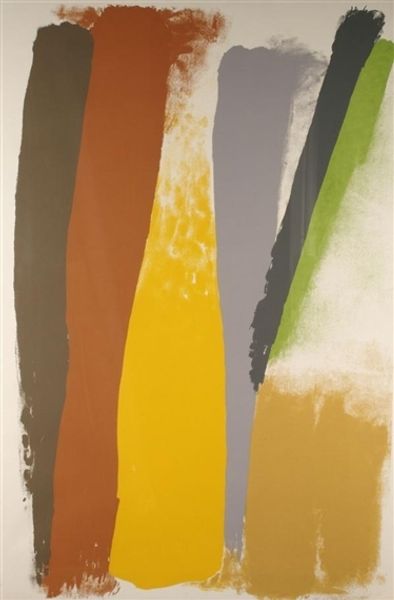
painting, acrylic-paint
#
abstract-expressionism
#
painting
#
op art
#
pop art
#
colour-field-painting
#
acrylic-paint
#
geometric
#
abstraction
#
modernism
Copyright: Paul Feeley,Fair Use
Curator: This is "Abstract (Red and Yellow)," a painting by Paul Feeley. What are your initial thoughts on it? Editor: It strikes me as surprisingly flat, yet also quite bold in its color choices. There's an almost industrial quality to the application of paint. It’s immediate but… uncomplicated, right? Curator: Feeley's work sits within a fascinating dialogue of modernism. One cannot dismiss the gendered coded narrative embedded in mid-century abstract expressionism where artists sought to transcend social norms yet inevitably fell prey to reproducing the same patriarchal structure of pre and post-war American society. What do you read into this piece with its…simplified geometric forms? Editor: Well, it certainly echoes the mid-century interest in materiality, that's plain enough. Considering he used acrylic paint, a then relatively new medium, we can explore how industrial advancements changed the very language of artmaking. He’s making a physical object using new means of production that also happened to shape art from this period in a more profound and tangible way. Curator: I can't help but think of this through a post-structuralist lens and critique that supposed detachment from context by focusing on these binary-oppositional forces—the flat versus the implied depth, or organic versus geometric—and perhaps exploring a tension regarding authenticity and appropriation of those historical canons within new-age artistic expression. Editor: It feels somewhat impersonal in its production. The smooth surfaces betray any sense of tactile engagement; in effect, Feeley has reduced the hand of the artist—his labor—to a purely executive function. Which certainly had its effect on movements like Pop Art, wouldn’t you say? Curator: Perhaps. From a gender perspective, the simplification and seeming reduction in detail are at the risk of reproducing reductive assumptions—that one could see abstract geometry as an inherently male visual vernacular. A view I find not only problematic but ahistorical and even somewhat naïve when removed from current queer theories that influenced Feeley's time. Editor: Well, looking at its making, one might say it reflects the rapid societal changes, that are almost like the quick-drying properties of acrylic paint; instantaneous. He might be more about the aesthetics but one cannot deny these broader contextual links to its material and societal footprint. Curator: An intriguing viewpoint, a synthesis of making and meaning that illuminates dimensions of this work from distinct perspectives. Thank you. Editor: Thanks to you, too. It has been an enlightening discussion on Feeley's abstract art.
Comments
No comments
Be the first to comment and join the conversation on the ultimate creative platform.
